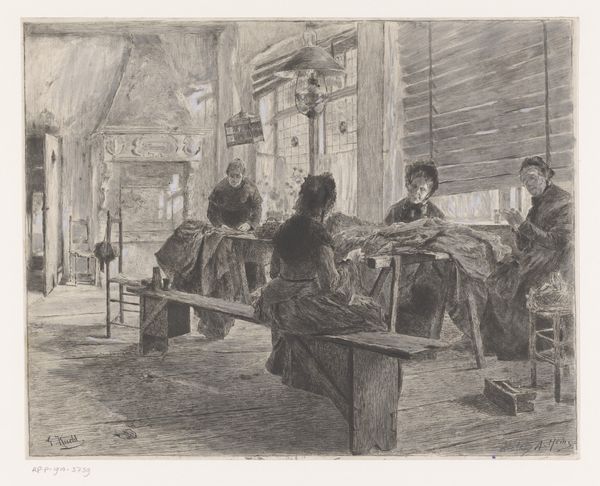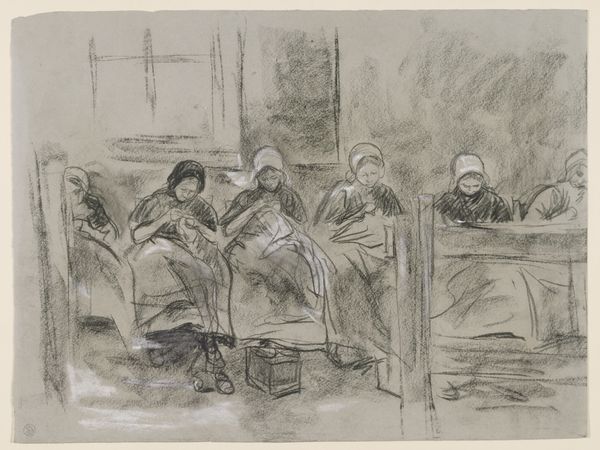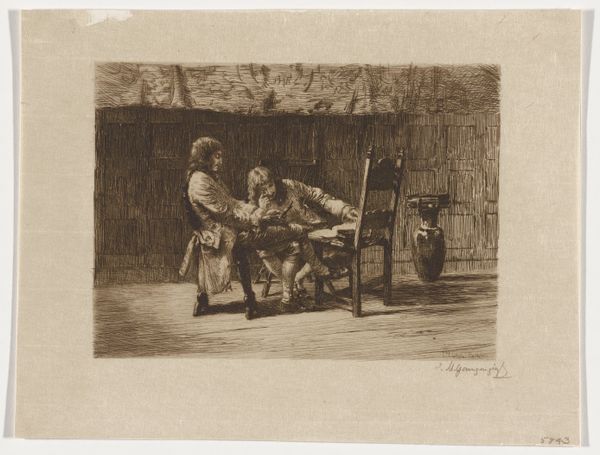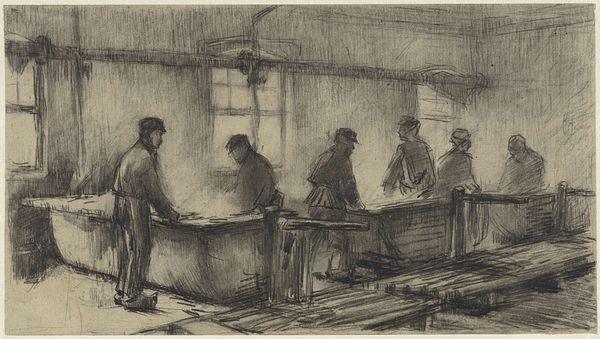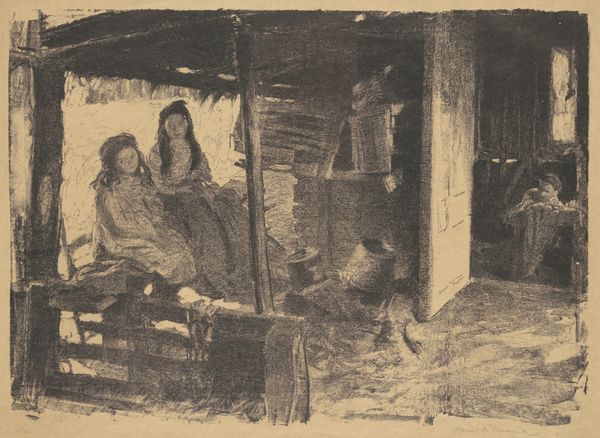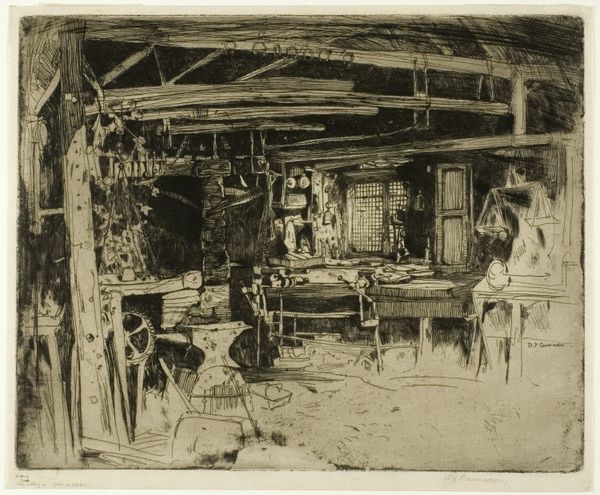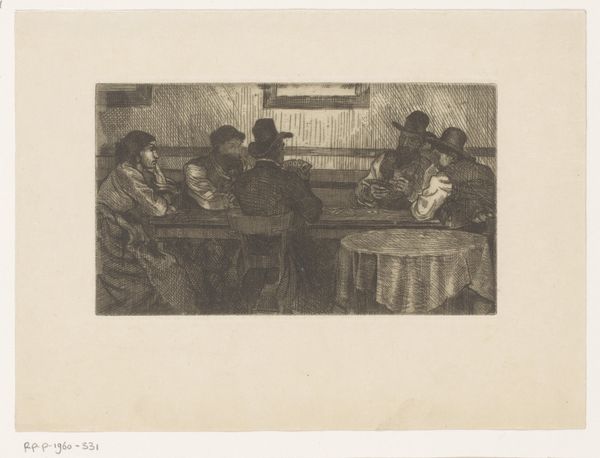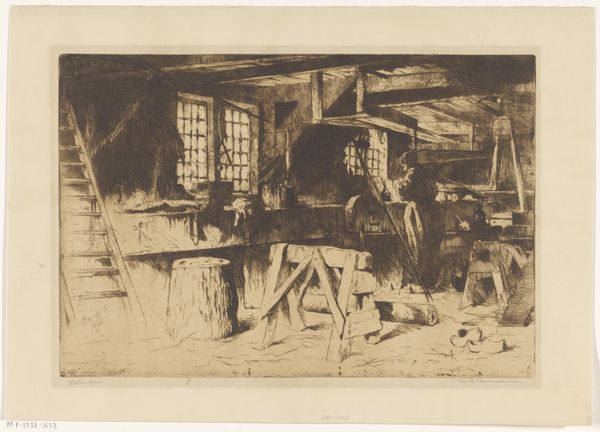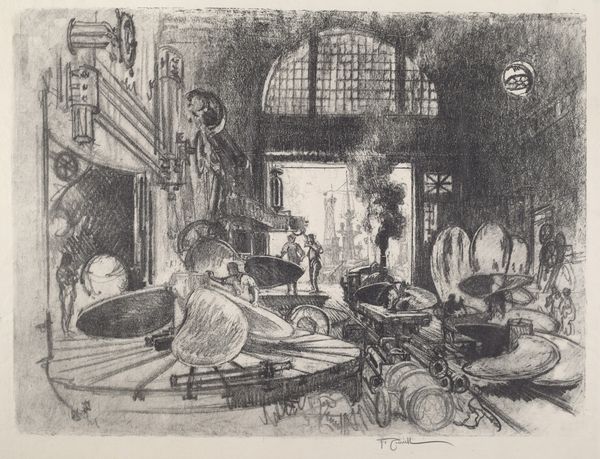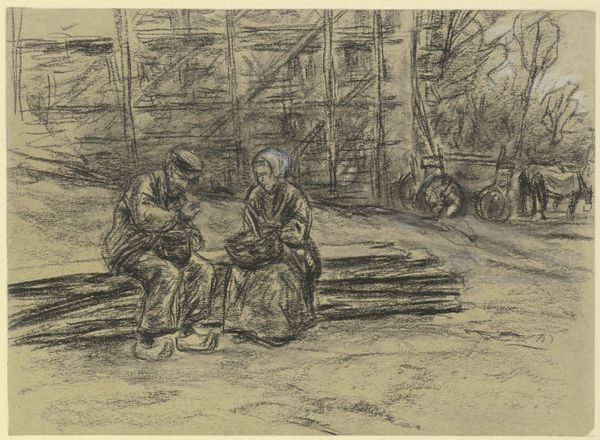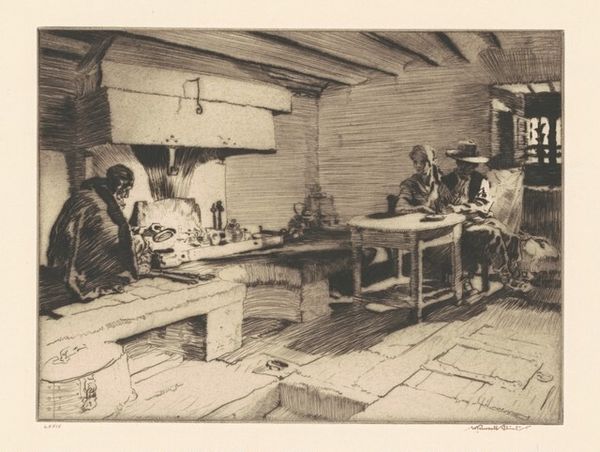
drawing, tempera, print, etching, impasto
#
portrait
#
drawing
#
tempera
# print
#
etching
#
impasto
#
group-portraits
#
genre-painting
#
history-painting
#
realism
#
monochrome
Dimensions: height 296 mm, width 376 mm
Copyright: Rijks Museum: Open Domain
Curator: Let’s turn our attention to "Vier vrouwen in een naaiatelier aan het werk," or "Four Women in a Sewing Workshop," believed to have been created sometime between 1866 and 1910. It appears to be a print, combining etching and possibly tempera, to give it a unique texture. Editor: It has a sombre, almost ghostly feel to it. The monochrome palette emphasizes the figures hunched over their work, creating a quiet, contemplative atmosphere. The lamp casts shadows, underscoring their concentration and maybe even a sense of burden. Curator: Indeed. Considering its era, this work captures the changing socio-economic landscape. Note the meticulous detail in rendering the textures of the fabrics, the crude benches. It highlights the labour, the production methods inherent in this garment-making. Are these independent artisans or part of a larger sweatshop environment, one wonders. Editor: For me, it's about the collective experience. These women, their shared posture and intense focus suggest a sisterhood formed through work, a visual representation of the saying 'misery loves company'. The simple forms, though realistic, have a subtle, deeper connection to ideas of domesticity and labour. Is that a birdcage in the corner, I wonder, maybe indicating something about being confined or perhaps hoping for some escape. Curator: That’s an interesting connection. Zooming in, we can observe how the artist manipulates light and shadow, not to create a sense of beauty, but to showcase the conditions, the physical reality of their work. Even the seeming unfinished nature contributes to a rawness; it almost has the unfinished aspect of their toil. Editor: The fact that they're faceless adds a universal quality, elevating them into emblems of female labor throughout history. Their gestures and stances carry stories of devotion to craft, but also sacrifice, wouldn't you agree? There’s history etched in every line, a kind of muted drama that quietly pulls us in. Curator: It certainly provides a tangible connection to the past, compelling us to consider how we understand value and commodification, even to this day. Editor: An artwork doesn’t always need vibrant colors or epic themes to possess lasting symbolic power. The shared burden of these women speaks volumes.
Comments
No comments
Be the first to comment and join the conversation on the ultimate creative platform.

